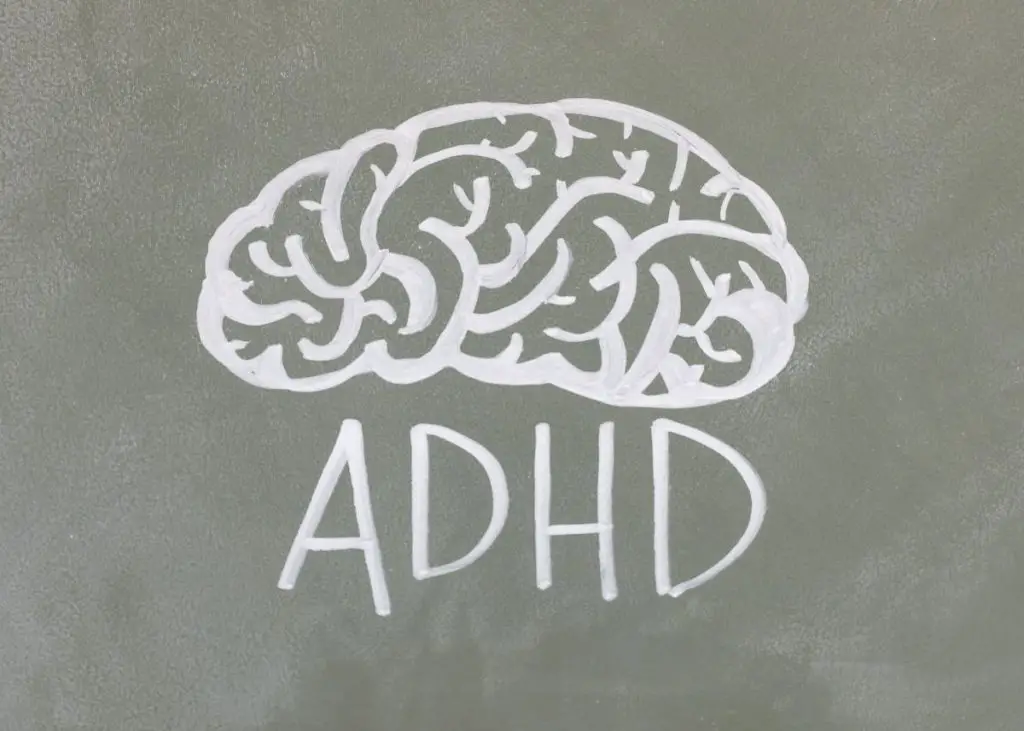ADHD Sensory Overload: Causes, Symptoms, And Management
What exactly is ADHD sensory overload? I’ll tell you the causes, the symptoms, and how to cope. You’ll learn everything you need to know!
While I was a teacher and before I became a stay-at-home mom, I worked with many students who had ADD or ADHD. Many of them struggled with sensory overload.
Note: This post may contain affiliate links, which means if you buy from my link I might make a small commission. This does not affect the price you pay. See the full affiliate disclosure here.
It can be so hard knowing how to help your child.
I wrote this post to give you all the information you need to understand sensory overload and what to do to help your child.
I want this to be a resource for you. Feel free to comment or email me if you have any questions!

ADHD Sensory Issues
Attention Deficit Hyperactivity Disorder (ADHD) is a neurodevelopmental disorder that affects millions of people worldwide. ADHD can impact various aspects of an individual’s life, including their ability to focus, control impulsive behavior, and regulate emotions.
However, people with ADHD may also experience sensory overload, which can further exacerbate their symptoms and affect their daily functioning.
Sensory overload occurs when an individual’s sensory system becomes overwhelmed by stimuli from their environment.
For people with ADHD, this can be particularly challenging, as they may have difficulty filtering out irrelevant information and focusing on what is important.
Sensory overload can manifest in different ways, such as feeling overwhelmed by noise, bright lights, or certain textures. It can lead to physical and emotional discomfort, including anxiety, irritability, and fatigue.
Understanding how sensory overload affects individuals with ADHD is crucial in developing effective strategies to manage the condition.
ADHD And Sensory Overload
Individuals with Attention Deficit Hyperactivity Disorder (ADHD) may experience sensory overload, which can lead to overstimulation and difficulty processing information.
Sensory overload occurs when the brain receives more sensory information than it can handle, resulting in feelings of overwhelm and stress.
ADHD brains are wired differently, and they process information differently than neurotypical brains. This can make it difficult for individuals with ADHD to filter out unnecessary sensory information and focus on what is important.
As a result, they may become easily distracted and overwhelmed by sensory input, such as bright lights, loud noises, or strong smells.
Symptoms of sensory overload in individuals with ADHD may include irritability, anxiety, restlessness, and difficulty concentrating. These symptoms can be exacerbated by stress, fatigue, and lack of sleep.
Diagnosis of sensory overload in individuals with ADHD can be challenging, as it may be mistaken for other conditions, such as anxiety or depression.
However, a trained healthcare professional can identify the symptoms of sensory overload and make an accurate diagnosis. Managing sensory overload in individuals with ADHD can be achieved through a combination of medication, therapy, and lifestyle changes.
Medications such as stimulants and non-stimulants can help improve focus and reduce sensory overload symptoms. Therapy, such as cognitive-behavioral therapy, can help individuals with ADHD learn coping strategies to manage sensory overload. Lifestyle changes, such as reducing exposure to sensory triggers, can also be effective in managing sensory overload.
Overall, understanding the relationship between ADHD and sensory overload is important in managing the symptoms of ADHD and improving quality of life for individuals with ADHD.
ADHD Sensory Processing
Individuals with Attention Deficit Hyperactivity Disorder (ADHD) may experience difficulties processing sensory information, which can lead to sensory overload.
Sensory processing refers to the way the brain receives, interprets, and responds to sensory stimuli from the environment.
Sensory processing difficulties can manifest in various ways, including sensory overstimulation, sensory over-responsivity, and sensory integration dysfunction. These difficulties can affect multiple sensory systems, including vision, hearing, touch, taste, and smell.
ADHD individuals may experience sensory processing issues due to their brains’ inability to filter out irrelevant sensory stimuli, leading to much sensory input. This can result in sensory experiences that are overwhelming, distracting, and uncomfortable.
Sensory integration therapy is a treatment approach that aims to improve sensory processing dysfunction. This therapy involves providing sensory stimulation in a structured way to help individuals with ADHD learn to better process sensory information.
Overall, individuals with ADHD may experience sensory processing challenges that can affect their daily functioning. Understanding and addressing these issues through appropriate interventions can improve their quality of life.

Sensory Overload Triggers
Individuals with ADHD often experience sensory overload due to their heightened sensitivity to environmental stimuli. This can cause discomfort, anxiety, and in some cases, physical pain. Here are some common triggers of sensory overload in individuals with ADHD:
Loud Noises
Loud noises such as construction work, traffic, or even a loud TV can be overwhelming for someone with ADHD. This can cause them to become easily distracted and agitated.
Bright Lights
Bright lights, especially fluorescent lighting, can be a major trigger for sensory overload. This can cause headaches, eye strain, and fatigue.
Background Noise
Background noise such as people talking, music playing, or the hum of electronics can be distracting and overwhelming for individuals with ADHD. This can make it difficult for them to concentrate and complete tasks.
Environmental Stimuli
Environmental stimuli such as strong smells, textures, or tastes can also trigger sensory overload in individuals with ADHD. This can cause them to feel overwhelmed and uncomfortable in their surroundings.
It is important to note that sensory triggers can vary from person to person, and what may be overwhelming for one individual may not be for another. By identifying and avoiding these triggers, individuals with ADHD can better manage their symptoms and improve their daily life.
Emotional and Physiological Responses
Individuals with ADHD may experience emotional and physiological responses to sensory overload. The emotional responses can range from frustration, irritability, and anxiety to emotional outbursts and panic attacks.
These responses can be triggered by everyday situations such as loud noises or bright lights, which can be overwhelming for individuals with ADHD.
Emotional regulation can be challenging for individuals with ADHD, and this can lead to emotional reactivity. Emotional reactivity refers to the tendency to experience intense emotional responses to stimuli that are not typically considered emotional.
For example, an individual with ADHD may become highly emotional when faced with a task that requires sustained attention or when they are asked to switch tasks abruptly.
Physiological responses to sensory overload can include increased heart rate, sweating, and muscle tension. These responses are part of the body’s fight-or-flight response and are designed to help individuals respond to perceived threats.
However, in individuals with ADHD, these responses can be triggered by non-threatening stimuli, leading to feelings of anxiety and stress.
It is important for individuals with ADHD to learn strategies to manage their emotional and physiological responses to sensory overload. These strategies can include mindfulness techniques, deep breathing exercises, and physical exercise.
Additionally, individuals with ADHD can benefit from working with a therapist to develop emotional regulation skills and coping strategies for managing sensory overload.
ADHD Sensory Issues In Different Populations
Sensory processing issues are common in individuals with Attention Deficit Hyperactivity Disorder (ADHD).
However, these issues are not limited to ADHD and can be seen in various other neurodevelopmental conditions, including Autism Spectrum Disorder (ASD), Anxiety Disorder, and Post-Traumatic Stress Disorder (PTSD).
In the United States, approximately 11% of children aged 4-17 have been diagnosed with ADHD, making it one of the most prevalent neurodevelopmental disorders. While sensory processing issues are not a diagnostic criterion for ADHD, they are often present in individuals with the condition.
Research suggests that sensory processing issues in ADHD may be related to executive function deficits. Executive function refers to a set of cognitive processes that allow individuals to plan, organize, and regulate their behavior.
When executive function is impaired, individuals may struggle to filter out irrelevant sensory information, leading to sensory overload.
Oppositional Defiant Disorder (ODD) is another condition that commonly co-occurs with ADHD. Individuals with ODD may also experience sensory processing issues, which can exacerbate their behavioral symptoms.
Autistic people also commonly experience sensory processing issues. In fact, sensory processing issues are one of the diagnostic criteria for Autism Spectrum Disorder. Autistic individuals may experience hypersensitivity or hyposensitivity to sensory input, which can lead to sensory overload or underload.
Overall, sensory processing issues are a common feature of many neurodevelopmental conditions, including ADHD, ASD, Anxiety Disorder, PTSD, and ODD. Understanding and addressing these issues can improve the quality of life for individuals with these conditions.

Sensory Overload Treatment
Individuals with ADHD may experience sensory overload, which can lead to extreme reactions and a negative impact on their daily lives. Here are some practical tips for managing sensory overload:
Environmental Factors
Environmental factors can trigger sensory overload. Individuals with ADHD may benefit from creating a sensory-friendly environment by:
- Using noise-canceling headphones to block out loud noises
- Avoiding strong smells and food textures that may trigger a sensory meltdown
- Limiting exposure to bright lights and loud music
Flight Response
When experiencing sensory overload, individuals with ADHD may have a flight response. It is important to recognize the signs of a flight response and take steps to manage it. Some tips include:
- Taking deep breaths to calm down
- Engaging in physical activity to release excess energy
- Seeking a quiet space to relax and regroup
Impulsive Behavior
Sensory overload can lead to impulsive behavior. To manage impulsive behavior, individuals with ADHD can:
- Practice mindfulness and meditation to increase self-awareness
- Develop coping strategies to manage stress and anxiety
- Seek support from a mental health professional if necessary
Social Interactions
Social interactions can be overwhelming for individuals with ADHD. To manage social interactions, individuals can:
- Set boundaries to limit physical contact
- Take breaks during social events to recharge
- Communicate their needs to friends and family
Sensory Thresholds
Everyone has different sensory thresholds. It is important for individuals with ADHD to identify their sensory thresholds and take steps to manage them. Some tips include:
- Wearing comfortable clothing without itchy tags or rough textures
- Using fidget toys to manage tactile processing
- Avoiding situations that may trigger sensory overload
Coping Mechanisms
There are several coping mechanisms that individuals with ADHD and sensory overload can use to manage their symptoms. Some of these include:
- Deep breathing exercises: Taking slow, deep breaths can help calm the mind and reduce anxiety.
- Sensory breaks: Taking breaks from overwhelming stimuli can help prevent sensory overload.
- Time management: Breaking tasks down into smaller, more manageable parts can help reduce stress and prevent overwhelm.
- Exercise: Regular exercise can help improve focus and reduce anxiety.
- Mindfulness meditation: Practicing mindfulness can help individuals with ADHD and sensory overload stay present and focused.
Therapy
In addition to coping mechanisms, there are also several therapies that can be helpful for individuals with ADHD and sensory overload. These include:
- Occupational therapy: Occupational therapists can help individuals with ADHD and sensory overload develop coping strategies and improve their ability to perform daily tasks.
- Cognitive-behavioral therapy (CBT): CBT can help individuals with ADHD and sensory overload identify and change negative thought patterns and behaviors.
- Medication: In some cases, medication can be helpful in managing symptoms of ADHD and sensory overload.
- Professional help: Seeking professional help from a therapist or counselor can provide individuals with ADHD and sensory overload with additional support and guidance.
Overall, there are many different coping mechanisms and therapies that can be helpful for individuals with ADHD and sensory overload. Working with a healthcare professional can help individuals find the strategies that work best for them.
FAQs
Sensory overload can be overwhelming for individuals with ADHD, as their brains are already easily distracted and can struggle to filter out unnecessary stimuli. This can lead to feelings of anxiety, irritability, and even physical discomfort.
Common triggers for sensory overload in adults with ADHD can include loud noises, bright lights, strong smells, and crowded environments. Additionally, certain textures or sensations, such as scratchy clothing or tags on clothing, can also be triggering for some individuals.
Signs of an ADHD overstimulation meltdown can include emotional outbursts, physical discomfort, difficulty concentrating, and increased impulsivity. In severe cases, individuals may become completely overwhelmed and need to remove themselves from the situation entirely.
Coping strategies for sensory overload in adults with ADHD can include wearing noise-cancelling headphones, using fidget toys, taking breaks in quiet spaces, and practicing deep breathing or meditation techniques. It can also be helpful to establish a routine and schedule to help reduce the amount of unexpected stimuli throughout the day.
Sensory seeking behavior can be managed in individuals with ADHD by providing alternative, less disruptive sensory experiences. This can include providing a weighted blanket or chewable necklace for oral stimulation. It can also be helpful to provide structured activities that allow for physical movement and sensory input, such as yoga or dance classes.
While sensory overload can be a common experience for both individuals with ADHD and autism, the underlying causes and symptoms can differ. Individuals with ADHD may experience sensory overload as a result of their brain’s inability to filter out unnecessary stimuli, while individuals with autism may experience sensory overload due to a heightened sensitivity to sensory input. Additionally, individuals with autism may exhibit more severe symptoms and have a more limited ability to cope with sensory overload.
Want More?
If this post was helpful, here are some others I know you’ll love!
- 7 Types of ADHD: Understanding the Different Kinds of ADHD
- 25 Good Things About ADHD That Everyone Should Know
- 41 Best Classroom Procedures Examples
- 711 Catchy And Creative Classroom Name Ideas
- 83 Best Classroom Reward Party Ideas
- 50 Meaningful Classroom Job Ideas For Students
- 129 Fun Attention Grabbers For Kids In The Classroom
Final Thoughts
Managing sensory overload can be a challenge for individuals with ADHD. However, with the right strategies and support, individuals can learn to manage their symptoms and improve their daily lives.
It is important to seek a formal diagnosis and work with a healthcare professional to develop a personalized treatment plan that may include prescription medications and a healthy lifestyle.




